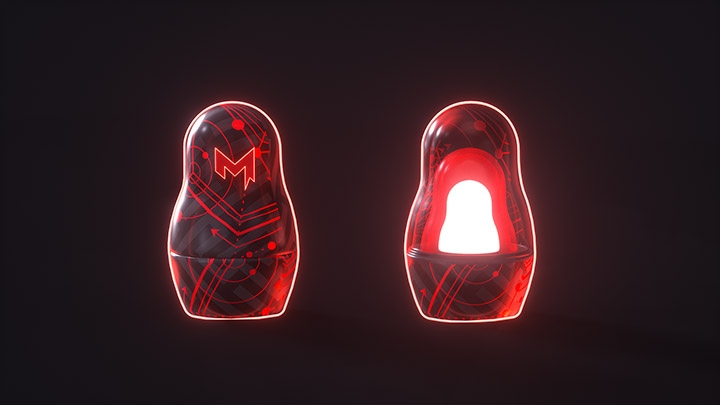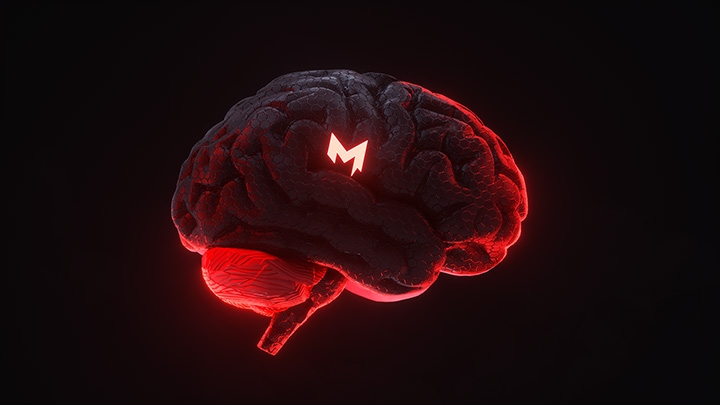Updated on December 25, 2023.
Branding in its entirety
Well, we've already seen a lot in this guide!
Let's recap what we've already seen together. We discovered:
With the help of the previous pages, we are beginning to understand the different components that make up well-executed branding.
In this chapter, we will play with Legos. We'll discover how the different blocks that compose branding interplay with each other to make a brand.
Are you ready? 🧱
The five components of branding
A well-crafted brand is based on five core components.
These blocks follow a specific order you must respect to build your brand successfully.
Brand audit
Before you define (or redefine) your brand, you must go through a critical step: listening.
Often overlooked, listening is essential to the success of your branding project.
The brand audit must be based on sharing and listening to be valuable and efficient. A strictly top-down exchange from the service provider to the client will not help your brand evolve.
It is essential to perform a proper audit of the existing situation. You need to assess where your brand is now to guide it toward its desired state.
This block based on listening allows your brand to challenge its present state to move towards its ideal:
What are its targets?
Who are its customers?
What are its current objectives?
What are its unspoken dreams?
Who constitutes its community?
What are its perspectives on evolution?
What is the level of excitement in the teams?
What understanding do the collaborators have of the brand?
...
The objective is to bridge the gap between the brand's current and desired state after going through the branding process.
Brand strategy
Once the brand audit is done, you can define your brand's core.
With the audit, you now have a clear picture of the questions to which you don't know the answers. You know where the following stages will take you.
You now need to precisely define your brand's essence and its reason for being. The brand strategy will help you determine it in its entirety.
The strategy's objective is to establish and create a compass pointing to the long-term vision of your brand.
Defining the components that will allow you to activate your brand is essential.
Brandscape
That's it! You have a long-term strategy in your pocket and a compass guiding you toward your future. Now let's look at your brand's context.
The brand territory (aka brandscape) allows you to evaluate the market in which your brand is located and evolves. This block will enable you to better understand and assess your current position.
Regardless of your sector of activity, the brand territory allows you to position yourself differently and intelligently in the market.
With the help of this analysis stage and your brand strategy, you can choose the right approach to conquer your market.
It is important to note that your positioning considers your brand's current trends. These trends will evolve over time. You will therefore have to repeat this step several times during the life of your brand (by yourself or with the help of experts).
As a result, your positioning will evolve over time. And that's normal!
Brand platform
Stopping the knowledge train! ✋
With brand strategy and brandscape, that's a lot of information. So it's time to make the first summary of your brand articulation 💪.
What is the purpose of a brand platform?
The brand platform is a document that summarizes all the previous building blocks (strategy and positioning) by putting them in a concise and digestible form.
What is its purpose?
To create excitement and bring clarity to your teams.
How do you do it? By sharing your well-articulated message.
Building a brand platform allows you to share the definition of short, medium, and long-term strategy steps with your internal teams.
This document allows salespeople, marketers, and other company members to take ownership of the brand. The goal is for your team to clearly understand your company's stakes so they can rally to your cause.
This document aligns all of your teams around the exact definition of your brand, allowing for an accurate understanding of the brand and building effervescence internally.
A motivated and united team will always be the source of a project's success.
In the business world, we see more and more people leaving in search of meaning. The salary is no longer the most critical part of a job offer.
Working without meaningful purposes and for a simple salary has never led to great things for the planet. However, working for a company with a real mission in mind while having the opportunity to positively impact society is priceless.
To truly put your heart into your work, your teams need to feel like they are contributing to something bigger than themselves.
In the end, the brand platform gives a single meaning to all members of your brand. It brings consistency and clarity to your entire team.
Brand identity
The brand identity allows you to lay the foundations of your brand's image. It is the visual, auditory, and almost non-verbal transcription of all the strategies developed during the previous steps.
This work is often based on a subjective vision of a group of individuals, hence the importance of having a brand strategy defined upstream. It is the only way to remove the ego from your projects. The brand must first appeal to your audience and community, not just to the C-levels.
Let's not try to lie to ourselves. We are all human, so we all have egos by definition 😱
Therefore, the previously mentioned methods and strategies allow you to look beyond your own person and think first and foremost about the common good.
If these five essential bricks are well done, then you will be able to discern an invisible force emanating from your products and services.
This force is the feeling shared by your audience starting to come to life and your project beginning to make an impression.
The human analogy
Back to childhood, let's draw you some pictures 🎉
A picture is often worth a thousand words, so let's try to portray the different branding processes with you.
We will base our analogy on human typology. Indeed, we naturally build brands in the image we all know best: that of a human.
The self

Copyright : Hyperstonk
The self represents what your brand is at its core. It's something it will never (or hardly ever) change. It is what will evolve with it as it grows.
What makes up your brand self:
Its reason for being
Its mission
Its vision
Its values
Its story
This is roughly your brand strategy.
Symbols and distinctive signs

Copyright : Hyperstonk
Meaningful or not, these elements will allow us to recognize your brand. The longer these elements last, the more recognizable your brand will become.
For a human being, it is the equivalent of:
a mole
wrinkles
a birthmark
one's teeth
a hair type
For a brand, it is:
A trademark
A slogan
Its colors
Its typography
Its images
Its videos
Its tone
Its humor
Its graphic charters
These elements are the foundation of your brand. They will also change over time. Fortunately, they are made to last and evolve.
These differentiating elements could be changed abruptly. However, they will be more memorable if they evolve slowly over time.
These elements will be the fruit of your brand's positionings and identities.
Appearance and personality

Copyright : Hyperstonk
It's how your brand communicates its vision, values, and story.
It's your visual identity. It will evolve over time with the maturity of your brand.
Like a person, your brand will make choices about how it is represented daily.
For example, during adolescence, a teenager goes through different phases. These phases will define them for a time or sometimes for their entire life. It is a choice at a particular time of a precise positioning linked to current trends.
You generally have three solutions available to you:
Conform to an existing group: "Since everyone at school wears Converses, I'll buy them too!"
Break the codes: "I'm going to dress in Vans and start skateboarding."
Playing with codes: "I'm going to buy red Converses to stand out from the crowd."
The school playground depicted here is your market.
The challenge resides in defining your appearance and personality by your positioning in the latter.
Interactions

Copyright : Hyperstonk
Using the above bricks, your brand:
knows who they are
what it wants to do in life
knows how to position itself in the different groups in its playground
Now you need to define how it will interact in this global context.
You have to codify the exchanges with your brand and the benefits your audience can get from it.
This is where marketing and sales come in. These teams will help you interact with your audience based on your brand strategy defined beforehand.
Person analogy: conclusion

Copyright : Hyperstonk
When you combine all of the above elements, you have the ingredients to create a real relationship with your brand community.
It is important to note that a significant relationship will always be based on the following:
empathy (hence the rise of UX in recent years)
honesty (ratings, opinions, comments...)
consistency (importance of brand guidelines)
emotion (emotional design)
With the help of everything we have learned, we can easily say that good branding is:
Knowing yourself well.
Matching your image to your inner self.
Maintaining and evolving your image over time.
NB: It takes time! It never stops! Every interaction counts, especially the first one!
To go further: the anatomy of a brand
In practice, it is possible to go further than the simple analogy of a person to illustrate how a brand works.
We can link each component of creating a brand image to a part of the human body.
We'll show you how and why 👀
The heart

Copyright : Hyperstonk
The heart of your brand is defined by the following:
What makes it exist and its underlying purpose
its mission
the problem it solves
its values
At inception, your brand already has all of these elements. They are just not yet structured, rationalized, and synthesized.
That's what branding brings! A synthesis of these elements and the strategy that will follow. Branding allows you to put into words ideas that are not tangible.
The brain

Copyright : Hyperstonk
The brain is your strategic part. It is the part of your body that allows you to rationalize what exists at the heart of your brand.
Without it, your brand will have a great chance of evolving in the wrong direction (or even self-destructing 💥).
The muscles

Copyright : Hyperstonk
Just like in life, having muscles without the presence of a brain doesn't do much good 🧠.
We can't say it enough, craft your brand strategy skillfully.
Muscles are the image of your brand's positioning. They are what allow your brand to move in its market.
Your brand can choose to be more or less muscular. However, it must decide which muscles to develop to best evolve in the physical space that is your market of choice.
Thanks to its muscles, your brand has the choice to develop adequate capacities to conquer its audience and bring help to its community.
The behavior

Copyright : Hyperstonk
Heart + brain + muscles = behavior.
That's it! You have a functional, human brand.
Your brand must be able to define its behavior. This is where the brand platform comes in. It's a document that defines the behavior of your entire brand body.
No matter your following action, you know what behavior it will take to get it done.
The style

Copyright : Hyperstonk
Now that you have a well-defined behavior unique to you, you can choose your style.
What type of outfit should you adopt? Should you be bearded or clean-shaven? What hair color? What hairstyle? ...
Your style defines your global identity (visual identity, sound signature, logo, etc.).
With a remarkable style, you will have the chance to be noticed and arouse interest in the people you meet.
Communication

Copyright : Hyperstonk
Last but not least! Finally, we come to the way your brand communicates. Whether verbal or not, your brand must convey and provoke emotions.
Communicating well can be learned, and it is much easier when you know who you are.
When your brand knows itself perfectly, you have every chance of making it an exceptional speaker. This brings us to implementing your marketing actions, i.e., all your internal or external communications.
NB: every good speaker knows that you must always consider your audience's reactions.
The feedback collected by your marketing and sales teams will be good indicators to help you develop your brand.
This new data will allow you to evolve your behavior and style and, therefore, how you communicate to your audience.
For a strong brand image:
Always try to visualize your brand as a human operating in the real world, with real social interactions and a real audience.
Take care of your brand as if you were taking care of yourself. Evolve perpetually!
Next stop: how to learn to communicate the right message 🚂
We hope you've enjoyed this chapter.
We took a long time putting this guide together for you.
Our only ask is that you take a quick second to share it with someone you like.
Our mission at Hyperstonk is to help fair, ambitious, and upright people make a mark and build their legend.
And, to make it happen, we need your help. So, it would mean the world to us.